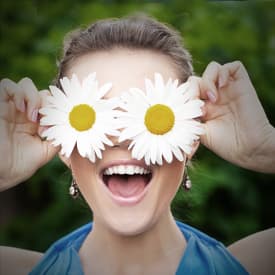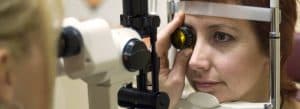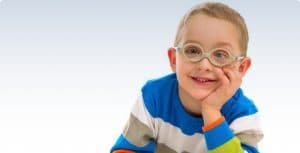Micro-prisms and BVD
BVD can impact both children and adults, dramatically affecting school grades and office performance. What is BVD? Binocular Vision Dysfunction (BVD) is caused by the
Read More2021 Update: Treatments for BVD
Up to 20% of the world’s population suffers from Binocular Vision Dysfunction (BVD). What is BVD? Binocular Vision Dysfunction (BVD) is caused by the two
Read MoreAre Micro-Prisms the Answer for BVD?
Has your eye doctor prescribed micro-prism lenses? Micro-prisms lenses are fast becoming the optimal treatment for people with Binocular Visual Dysfunction, BVD. With healthy binocular
Read More2021 Update: BVD and Digital Eye Strain
Over 50% of the population suffer with Digital Eye Strain (DES) impacting the lives of both children and adults. Eye strain describes a group of symptoms which occurs after extended use of the eyes, usually involving intense concentration or long periods of sustained attention. If you have any eye discomfort caused by looking at something for a long time, you probably have eye strain, you may have experienced Digital Eye Strain, if you have sitting in front of a computer screen for hours!
Read More2021 Update: BVD and Anxiety
According to the American Psychiatric Association, as many as 30% of the adult population experience anxiety at some point during their lifetime. Anxiety is the most common of all mental disorders. It can cause feelings of near-constant fear, panic, and worry. Feeling anxious and overwhelmed can come from being unsure of your surroundings and often prevents sufferers from living a normal life.
Read MoreVision and Autism: Part 2
Author: Randy Schulman, MS, OD, FCOVD As vision is key to so many other systems, vision intervention, such as vision therapy, can have a profound
Read MoreVision and Autism: Part 1
Author: Randy Schulman, MS, OD, FCOVD This year marks my 30th year as an optometrist and during all of those years I have seen thousands
Read MoreWhat Are Visual Efficiency Problems?
Poor visual efficiency skills can negatively impact performance in school, at the office, and on the sports field. Understanding and knowing what to look out for can help with early detection and treatment of visual problems – leading to improved school grades and sports achievements.
Read MoreCataracts: Top 5 Myths and Facts
Have you been told you have cataracts, but not sure about the myths and facts? Here are the top 5 myths and facts about cataracts.
Read MoreCould a Child with ‘20/20 Sight’ Have a Vision Problem?
Studies have found that 1 out of 4 school children suffer from a vision problem that impacts their learning. If your child has 20/20 vision,
Read MoreWhat Is Computer Vision Syndrome?
About 70% of computer users suffer from eye strain, known as ‘Computer Vision Syndrome’. If you suffer from fatigue, headaches, migraines or lose attention easily when using a computer, you most probably are experiencing this very common visual problem. Vision therapy could provide the relief you have searching for.
Read MoreBVD and Motion Sickness
Binocular Vision Dysfunction (BVD) is a condition where the eyes are misaligned and the visual system struggles to send one clear image to the brain. BVD can cause dizziness and motion sickness due to the visual system’s difficulties in fusing together the images from each eye.
Read MoreWhat is Binocular Visual Dysfunction (BVD)?
Up to 20% of the world’s population suffers from Binocular Visual Dysfunction (BVD). If you experience headaches, blurred vision, anxiety, balance problems, and dizziness making simple everyday tasks difficult, you may have this common visual problem.
Read MoreFeeling Anxious? You May Have a Vision Problem
Anxiety disorders affect millions of people each year. But did you know that certain vision problems can actually trigger anxious thoughts and feelings? Binocular vision
Read More“Lazy Eyes” Are Not Lazy
If a lazy eye is not really ‘lazy’, then what is it exactly? Lazy eye (amblyopia) is the most common neuro-developmental vision condition, affecting up
Read MoreStanford University: Concussions and Oculo-Motor Dysfunction
This month, a presentation was given by Dr. Jamshid Ghajar, MD, PhD, FACS at the Stanford Brain Performance Center (Department of Neurosurgery and Stanford Athletics),
Read MoreVision Therapy or Orthoptic Therapy?
Vision therapy and orthoptic therapy are sometimes confused with one another. The information on this page includes everything you need to know about what makes
Read MoreAre You Suffering From Post-Concussion Symptoms?
Up to 90 percent of people experience post-concussion symptoms for many years… until they receive effective treatment from a neuro-optometrist. Post traumatic vision syndrome (PTVS)
Read MoreSixth Nerve Palsy
Sixth nerve palsy, also called abducens nerve palsy, is a rare condition that occurs when the sixth cranial nerve, also called the abducens nerve, becomes damaged.
Each year, around 11 in 100,000 people are diagnosed with sixth nerve palsy.
The sixth cranial nerve is responsible for sending signals to the lateral rectus muscle. When the sixth cranial nerve becomes damaged, it prevents the lateral rectus muscle from operating and results in an inward eye turn (esotropia) and double vision.
Read MoreFourth Nerve Palsy
Fourth Nerve Palsy, also known as Superior Oblique Palsy or Trochlear Nerve Palsy, occurs when the fourth cranial nerve becomes diseased or damaged. The fourth cranial nerve controls the actions of the superior oblique eye muscle and is responsible for turning the eye inward and downward.
Read MoreDo You Suffer From Headaches?
If you suffer from frequent headaches you may have binocular vision dysfunction. While this may sound concerning, try not to let yourself worry too much,
Read MoreWhat’s the Deal with Prism Lenses?
Author: Dr. Randy Schulman EyeCare Associates, CT Has your eye doctor prescribed prism glasses or lenses? More recently, people are hearing more and more about
Read MoreVision Therapy for Math: Success Stories
Personal stories from adults and children who improved their math scores following Vision Therapy. *Names have been changed for privacy protection. Click here for a
Read MoreWhat Are Prism Lenses?
Prism lenses can be effectively used to treat vision conditions, such as double vision and other binocular vision difficulties. One of the most common uses for an eye doctor to prescribe prisms is to treat a condition known as Binocular Visual Dysfunction (BVD).
Read MoreVision Therapy for Adults: Success Stories
Personal stories from adults whose lives have been enhanced with Vision Therapy.
*Names have been changed for privacy protection
Vision Therapy for Double Vision: Success Stories
Personal stories from adults and children diagnosed with double vision. *Names have been changed for privacy protection. Click here for a list of more success
Read MoreCan Adults Have Convergence Insufficiency?
Convergence insufficiency (CI) is a common vision condition that affects up to 17 percent of children and adults. While CI is generally diagnosed in children
Read MoreDouble Vision (Diplopia)
Each year, approximately 850,000 visits to the doctor and emergency room are associated with double vision. Double vision, medically termed diplopia, can be very worrisome.
Read MoreHow Is Convergence Insufficiency Diagnosed?
Do you often lose your place while reading? Do words on the computer screen seem blurry? Do you suffer from frequent headaches or eye discomfort
Read MoreCan Glasses or Eye Patches Treat Convergence Insufficiency?
If you have been diagnosed with convergence insufficiency (CI), or are experiencing symptoms of CI, you may be wondering how CI is treated. Any type
Read MoreWhat Is a Diabetic Eye Exam?
If you have been diagnosed with diabetes, annual eye exams will help to protect your eyes from serious sight-threatening eye diseases, linked to diabetes. Diabetes is a condition that prevents the body from using and storing sugar properly. As a result, excessive amounts of sugar remain in the bloodstream and if uncontrolled, can cause damage to the tiny blood vessels all over the body, including those in your eyes.
Read MoreDyslexia FAQs
Q: What is dyslexia? A: Dyslexia is a complex condition that impacts the way the brain processes and interprets information. It is one of the
Read MoreConvergence Insufficiency FAQs
Q1: What is convergence insufficiency (CI)? A: Convergence insufficiency is a highly treatable binocular vision condition that affects near vision and eye muscle coordination. Convergence
Read MoreEyecare for Children
Eyecare for Children Are you worried about your child needing glasses? Do you want to understand why your child needs bifocals or multifocals? Are you
Read MoreGuide to Eye Turns
Eye turns, are also known as strabismus, and affect over 1 in 20 babies and toddlers. With early detection and eye care treatment, with eyeglasses and vision therapy, the eye turn can often be resolved, without relying on complicated eye surgeries.
Read MoreVision Therapy for Children
Are your child’s school grades not a true reflection of their potential? Has your child been told they have a learning or attention difficulties?
The problem could be with their eyes or visual skills and vision therapy might the solution you have been looking for.
Vision Therapy
Just checking how exerpts work
Read MoreVision, Dizziness and Imbalance
Many people experience dizziness or balance issues following a mild concussion or other traumatic brain injury (TBI). Dizziness or imbalance can be caused by a
Read MoreVision and Brain Injuries
Can the eyes and visual system be affected by a brain injury? Yes, Traumatic brain injury (TBI) can result in significant vision problems, unfortunately these often remain undiagnosed for years, dramatically impacting the quality of life.
Read MoreHow Does a Traumatic Brain Injury Cause Vision Problems?
Brain injuries can lead to vision problems, especially in children. We often think of a Traumatic Brain Injury (TBI) affecting adults, however consider these facts:
Read MoreEye Conditions That Cause Strabismus
Many common eye conditions can lead to an eye turn. Eye turns affect over 3 people in 100 and can be successfully treated by eye doctors, often without needing complex eye surgery.
Read MoreParent’s Checklist to Identify a Vision Problem
Is a vision problem impacting your child’s academic success or athletic performance?
Did you know that vision problems affect up to 25 in every 100 children – that’s at least six students in every class.
This checklist can be a useful tool for you to understand all of the behavioral and physical symptoms that your child is experiencing, and may help to facilitate the identification of a vision problem.
Vision Therapy for Convergence Insufficiency: Success Stories
Real-life stories from parents of children who have successfully completed a vision therapy program for the treatment of Convergence Insufficiency. *Names of the children and
Read MoreEffective Treatment for Convergence Insufficiency
Clinical research study shows the effectiveness of vision therapy for the treatment of Convergence insufficiency (CI). Convergence is an essential visual skill for success in
Read MoreWhat Is Exotropia?
Exotropia is a common form of strabismus characterized by an outward eye turn, away from the nose. Exotropia is a eye turn where one eye points outwards, this may be noticed while the child is looking at distance objects, near objects or both.
Read MoreThe 4 Frequent Eye Conditions
Have you been told you have an eye disease or need eye surgery? This guide will help you understand the 4 most common eye conditions:
Read More










































